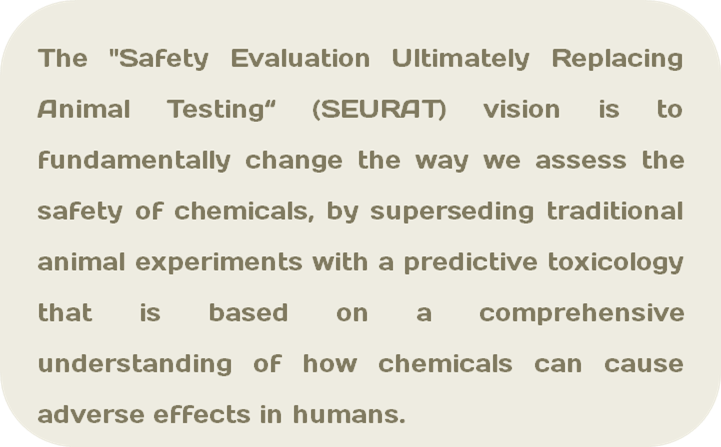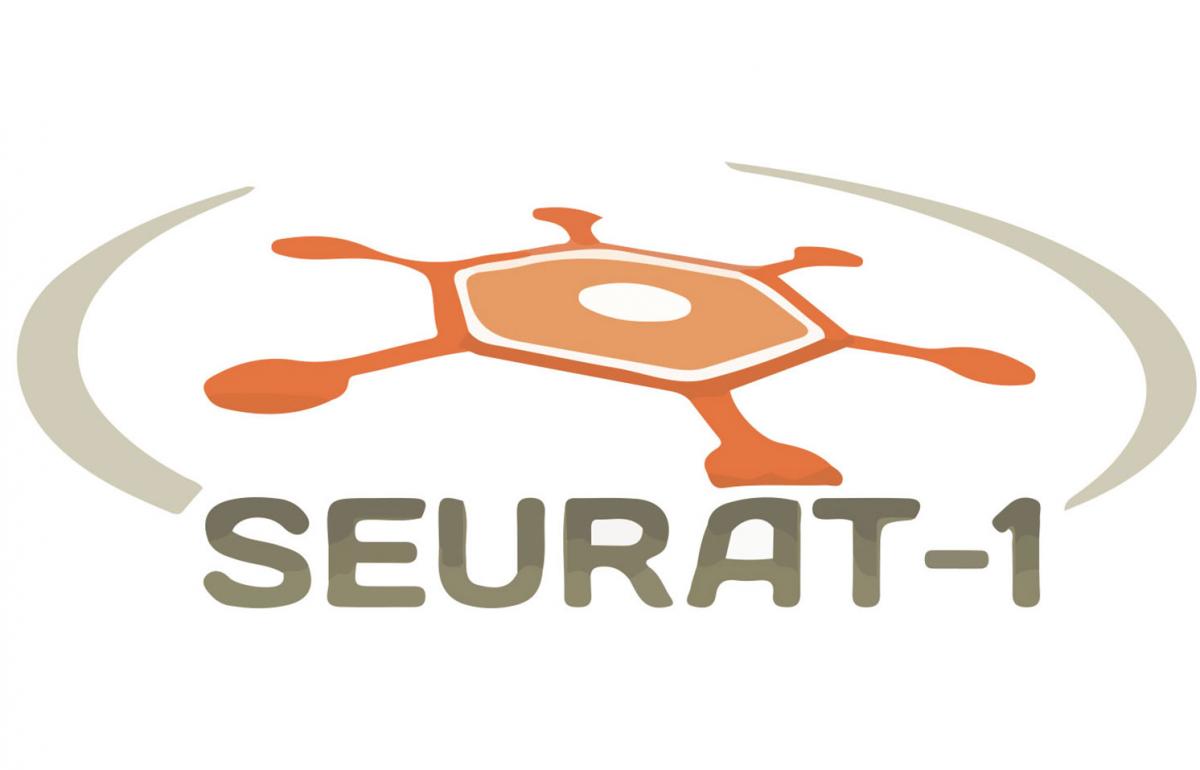The Vision
 The vision foresees safety assessment frameworks that optimally combine a range of reliable and robust experimental (in vitro) and computational tools in a purposeful manner to deliver the relevant information needed for decision making. These predictive toxicology tools will associatesubstances of concern with a new taxonomy of toxicological hazard categories, and they will predict the likelihood of any adverse health effects as a function of exposure, for different sub-populations. The uncertainty of these predictions will be sufficiently characterised as to facilitate effective risk management and communication, with the appropriate degree of precaution. The predictive tools will be widely available, affordable, and reliable so that every substance destined for commerce will be sufficiently evaluated in good time, at a reasonable cost, and in a consistent manner. To facilitate trade and the global market, safety assessment frameworks will be established and harmonised at international level, allowing them to be implemented in all jurisdictions. The knowledge gained from safety assessment of new substances will be fed back into the product development process, thereby improving human safety evaluation, driving innovation, increasing consumer choice, promoting sustainability, and improving industrial competitiveness.
The vision foresees safety assessment frameworks that optimally combine a range of reliable and robust experimental (in vitro) and computational tools in a purposeful manner to deliver the relevant information needed for decision making. These predictive toxicology tools will associatesubstances of concern with a new taxonomy of toxicological hazard categories, and they will predict the likelihood of any adverse health effects as a function of exposure, for different sub-populations. The uncertainty of these predictions will be sufficiently characterised as to facilitate effective risk management and communication, with the appropriate degree of precaution. The predictive tools will be widely available, affordable, and reliable so that every substance destined for commerce will be sufficiently evaluated in good time, at a reasonable cost, and in a consistent manner. To facilitate trade and the global market, safety assessment frameworks will be established and harmonised at international level, allowing them to be implemented in all jurisdictions. The knowledge gained from safety assessment of new substances will be fed back into the product development process, thereby improving human safety evaluation, driving innovation, increasing consumer choice, promoting sustainability, and improving industrial competitiveness.
Strategy A Mode-of-Action Backbone based on Mechanistic Understanding

Mode-of-action theory is still emerging but there are already a number of important principles that have shaped the SEURAT research strategy. The first is that every toxicant can be associated with one or more mode-of-action categories. Another principle that must be considered concerning mode-of-action theory is that many key events and pathways are common to many cell types throughout the human body.
The SEURAT-1 Research Initiative will deliver many important computational and experimental tools, and related knowhow, that will be critical components in predictive toxicology approaches. To demonstrate the potential of these tools and how they can be assembled in an integrated manner, the cluster will undertake a proof-of-concept exercise to demonstrate how a mode-of-action based testing strategy can be used to predict aspects of repeated dose target organ toxicity. The concepts to be proven are stratified into three distinct levels:
- At the theoretical level, proof-of-concept aims to show how toxicological knowledge concerning mode-of-action can be mined or perhaps generated, and then reconciled, consolidated and explicitly described in a format that can be managed and communicated in an effective and harmonised manner.
- At the systems level, the intention is to demonstrate how test systems can be produced by integrating various in vitro and in silico tools emanating from the projects, in order to assess the toxicological properties of chemicals using mode-of-action as an analytical basis.
- At the highest level, proof-of-concept will address the desire to show how the data and information derived from the tools and methods developed within the cluster can actually be used in specific safety assessment frameworks and scenarios.
The first step: SEURAT-1SEURAT was presented by the FP7 HEALTH Theme in 2008 as the long-term target in safety testing. The Research Initiative launched by the European Commission and Cosmetics Europe (“Towards the replacement of in vivo repeated dose systemic toxicity testing”) is called “SEURAT-1”, indicating that this is a first step in a specific area addressing the global long-term strategic target SEURAT. A tiered approach is foreseen starting with innovative concepts for repeated dose systemic toxicity and ends with animal free Innovative Toxicity Testing (ITT) enabling robust safety assessment.
During its funding period of five years, SEURAT-1 will iteratively develop an innovative concept for repeated dose systemic toxicity testing based on the research work carried out by six Research Projects (also called “Building Blocks”). The goal is to demonstrate that this concept constitutes a solid basis for a future full implementation of the new toxicity pathway strategy based on the development of innovative testing methods that will be more predictive than existing testing procedures.
Beyond SEURAT-1
Successful completion of SEURAT-1 will lay the foundation for follow-on efforts that will broaden the toxicological, chemical, and regulatory domains addressed. The mode-of-action framework will have been well established, but will be limited in scope, covering mainly repeated-dose toxicity associated with primary organs. Thus the mode-of-action ontology will need to be further expanded by harvesting existing knowledge, and generating new knowledge where gaps exist, to cover other adverse health effects linked for example to cancer and reproduction.
Uptake and application of SEURAT methodology for safety assessment will begin modestly on a proof-of-concept level within SEURAT-1, but will continually need to expand in both depth and scope. Possible application areas in the relatively near future include satisfying Classification, Labelling and Packaging (CLP) requirements, or supporting a weight-of-evidence analysis or read-across in a Chemical Safety Assessment under REACH. It is likely that novel tools and safety assessment frameworks deriving from SEURAT will be initially implemented and evaluated in parallel to more traditional approaches. This will identify any shortfalls, build confidence, and define good practice for better safety evaluation that will ultimately replace animal testing.

Sara holds the esteemed position of Lead Publisher at SEURAT, overseeing the curation and dissemination of content centered on health and ethical consumer choices. With her rigorous editorial standards and an acute understanding of the health supplement industry, she ensures the delivery of accurate, insightful, and relevant information to the platform’s discerning audience. Her commitment to promoting cruelty-free practices has solidified the website’s reputation as a trusted source for professional and ethical insights in the sector.
